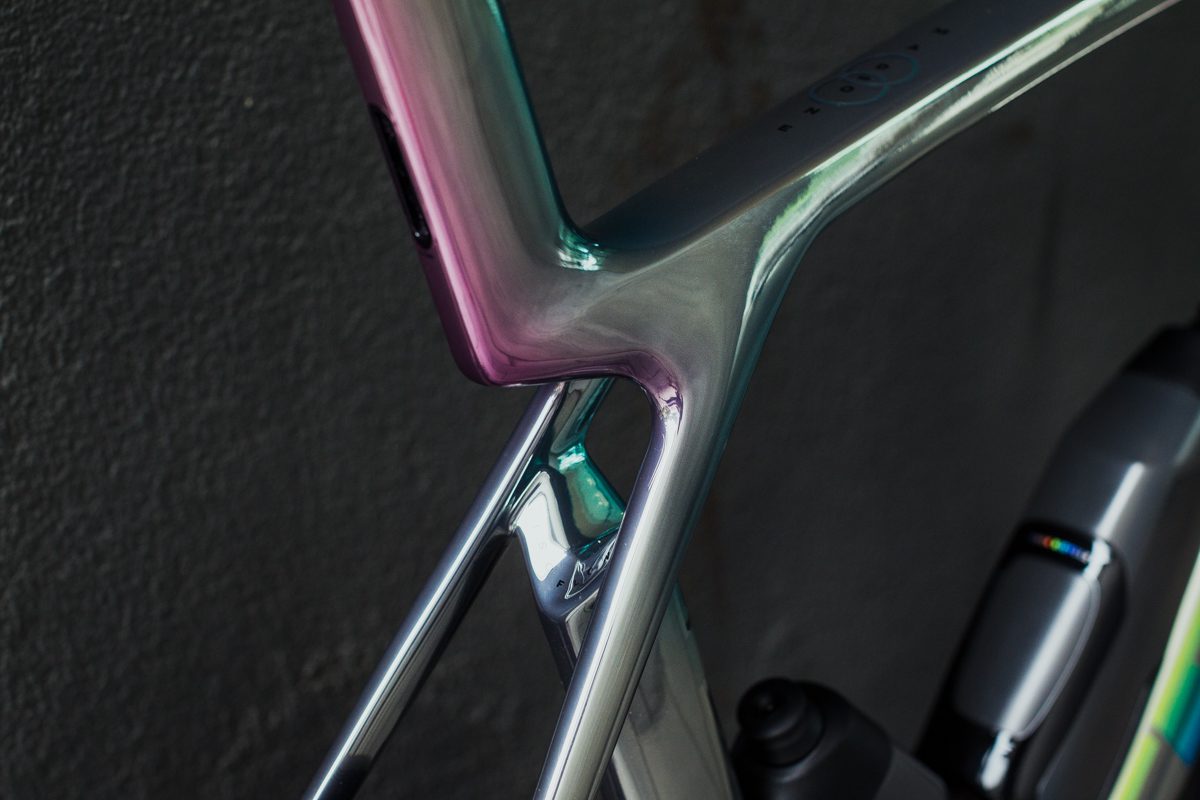The new Trek Madone Gen 8 will be the company’s one race bike
A revamped frame that slices through the wind and sails up climbs
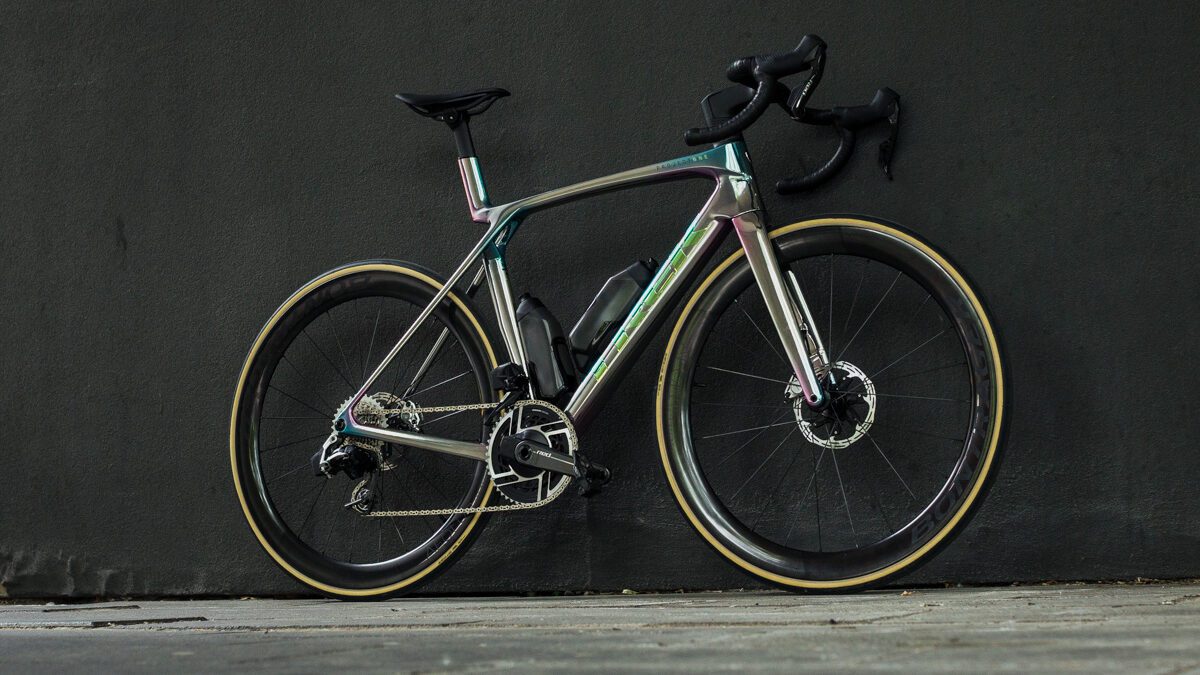 Photo by:
Matt Stetson
Photo by:
Matt Stetson
You might say the new eighth-generation Trek Madone is a poorly kept secret. Lidl-Trek’s Mads Pedersen won the first stage of the Critérium du Dauphiné on the Trek Madone Gen 8. Thibau Nys snagged Stage 3 of the Tour de Suisse on the same frame. But now, the new bike has been released officially. The company’s flagship aero bike has received a host of new changes, which are good news for riders (both pro and the rest of us). The launch, however, marks some bad news for another bike in Trek’s lineup, one that shares all the same letters in its name, albeit with an added accent on the e.
Why Trek is revising its road-bike lineup now
Back in September 2021, Trek was working on the fourth-generation of its lightweight road frame, the Émonda. As the team developed the bike, with trips to a wind tunnel and computer modelling, the group saw aerodynamic figures approaching those of Trek’s aero bike. Engineers and designers started exploring the idea of making one bike that had the low mass of the Émonda and aerodynamics of the Madone. It’s something other companies have already done. Specialized retired its aero Venge after the S-Works Tarmac SL7 came out in 2020 with all the necessary wind-slicing abilities on the climber’s bike. Argon 18 began phasing out its Gallium, all-round road bike, and aero Nitrogen after the Montreal company launched the Sum in 2022.
“The concept of a single race bike has been out there for a while and one of the reasons that we haven’t done that previously was it just required too much compromise,” said Jordan Roessingh, director of road bikes at Trek.
With the launch of the Madone Gen 8, Trek says the weight of the aero bike is the same as the Émonda. To be precise, it’s about 5 g heavier. The frame and fork of the size 56 Émonda is 1,141 g. The new Madone frameset in medium large weighs 1,146 g (frame: 796 g; fork: 350 g). (I’ll tell you more about why the old bike is size 56 and the new one is size medium large later.) Since the Madone is so feathery now, the carbon-fibre Émonda will be phased out of the company’s lineup. The aluminum Émonda ALR will stick around.
The aerodynamics of the Madone Gen 8 are essentially the same as the Gen 7 frame. Keeping things the same, however, required a whole bunch of design changes.
On developing the Trek Madone Gen 8
When I asked Alex Loy, lead engineer, and John Davis, aerodynamics lead, about just how many prototypes they made during the development of the Gen 8 Madone, they weren’t so sure.
“When it was model-year ‘24 Émonda—” Davis said develing into his personal memory banks.
“We did A1,” said Loy, finishing his colleague’s sentence.
“Yup. And A2.”
“A1, A2, E2, D2, C3—so that’s at least five.”
“C7.4, C8.11,” Davis started before the total “engineering-ness” of the names cracked me up as well as the other members of the Trek team in the meeting.
“Each of those refers to a class of shapes and tube orientations that we were evaluating,” Loy explained. “So E2 was, for example, the dropped seatstays class of bike that we were exploring.
If you are familiar with the design of the Gen 7 Madone, you’ll recognize that dropped seatstays would mean a host of other significant changes. For example, there’d be no IsoFlow. Or at least, the dropped seatstays prototypes didn’t have the gap that debuted on the previous Madone to reduce weight, boost compliance and improve aerodynamics. Yes, even that signature feature wasn’t a shoo-in for the new bike.
The pair eventually figured they had five aluminum prototypes for the wind tunnel and two carbon-fibre moulds that led to tens and tens of iterations with various layups. “But I’d say if you’re expanding your definition of prototype to the virtual side, it would be in the hundreds,” Davis said. “I tallied up the number of CFD runs, computational fluid dynamics, our aerodynamics simulation software. We ran more than 1,600. So, that’s not 1,600 different full bike prototypes, but many different virtual full-bike prototypes tested in a lot of different conditions virtually. We did a similar process virtually for structural efficiency.”
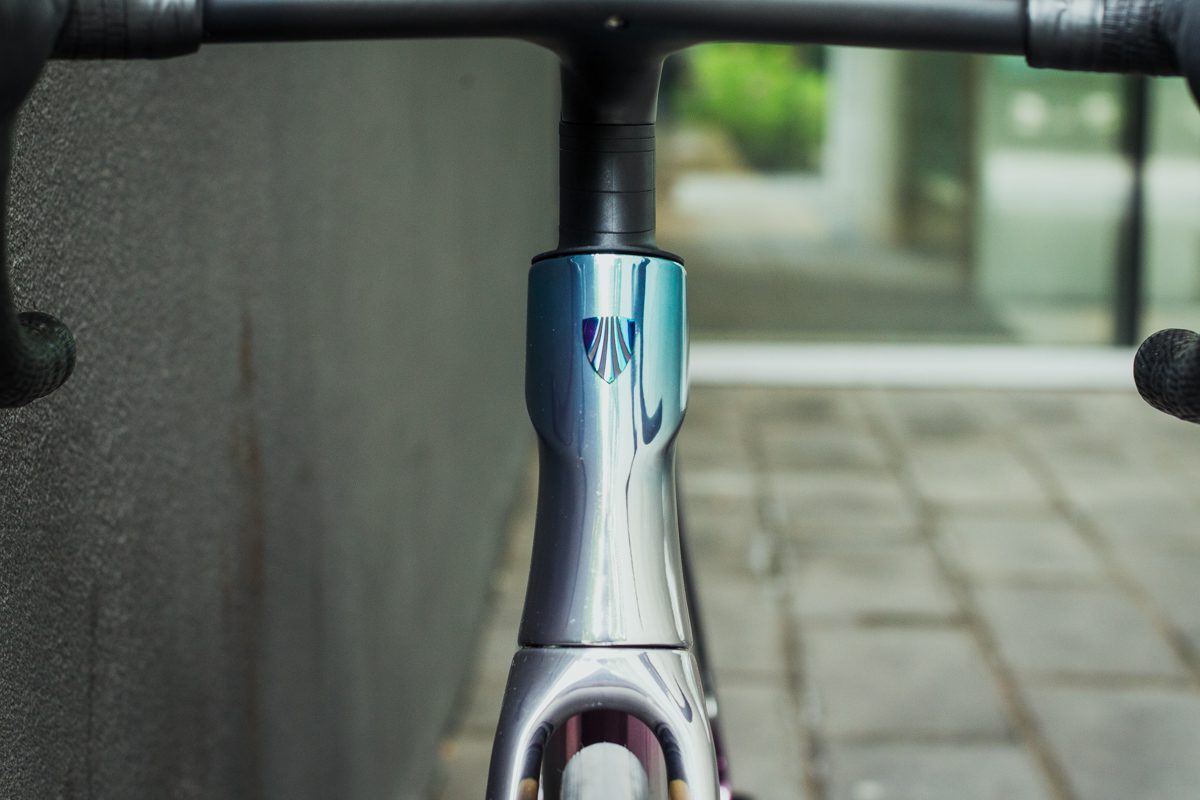
How Trek came to this new way of thinking about aerodynamics
Somewhat ironically, it was the aerodynamic research that went into the old Émonda that led to the bike’s end. The climber’s bike that was last updated in 2020 had been aero-fied a bit. That Émonda was Davis’s first bike project at Trek.
“Before that Émonda, we had been pretty much just looking at steady CFD, which ignores how the air changes with time,” Davis said. “That’s really important on a bike. We weren’t doing it in the past, not because we were neglectful or anything, we just didn’t have as much computing power as we do now. So we looked at unsteady aerodynamics on the Émonda and optimized the Kamtail as well as we could for that unsteady situation.”
The Kamtail is the truncated airfoil shape that has been a feature of the Madone’s design for more than 10 years. While you see aero shapes on the new Madone, the Kamtail doesn’t have the same large role as it once did.
“What the Émonda revealed to us is that the Kamtail shape is going to be great when you have steady flow. But once we get climbing conditions where you’re moving slower, we found the Kamtail lacking. That work,” Davis added, “directly kicked off research that ultimately went into this Madone and created the full system foil shapes.”
The full system foil is the term Trek uses to describe its aero approach on the Madone Gen 8. Instead of making each tube as aero as it can be, bike makers looked at the bike as whole, as if wheels, fork, frame and even bottles add up to one airfoil. With that approach, Davis, Loy and others have some flexibility in the design. For example, the fork, seat mast and upper seat tube use streamlined shapes because they face fast moving air. The lower part of the down tube, however, is pretty blunt.
“Generally, the lower you are on the bike, the less important aero is,” Davis said. “The reason for the boxy, blunt leading edge for the lower down tube is that it has the wheel in front of it. It’s in the wake of the wheel. It has the bottles behind it. So you can view that boxy shape as just one chunk of a larger airfoil shape that you’re cutting through in that lower down-tube section. Likewise, for the lower seat tube, that’s also very boxy. Because it’s behind the bottle, it barely sees the airflow at all. Those are also pretty important sections for structural efficiency, so there’s kind of a synergy there, if you will: where aero is not important, structural efficiency is pretty important.”
Ultimately, the new Madone has been designed to cut air best at lower yaw angles. At higher yaw angles, however, it’s no slouch thanks to the work the team did with unsteady aerodynamics.
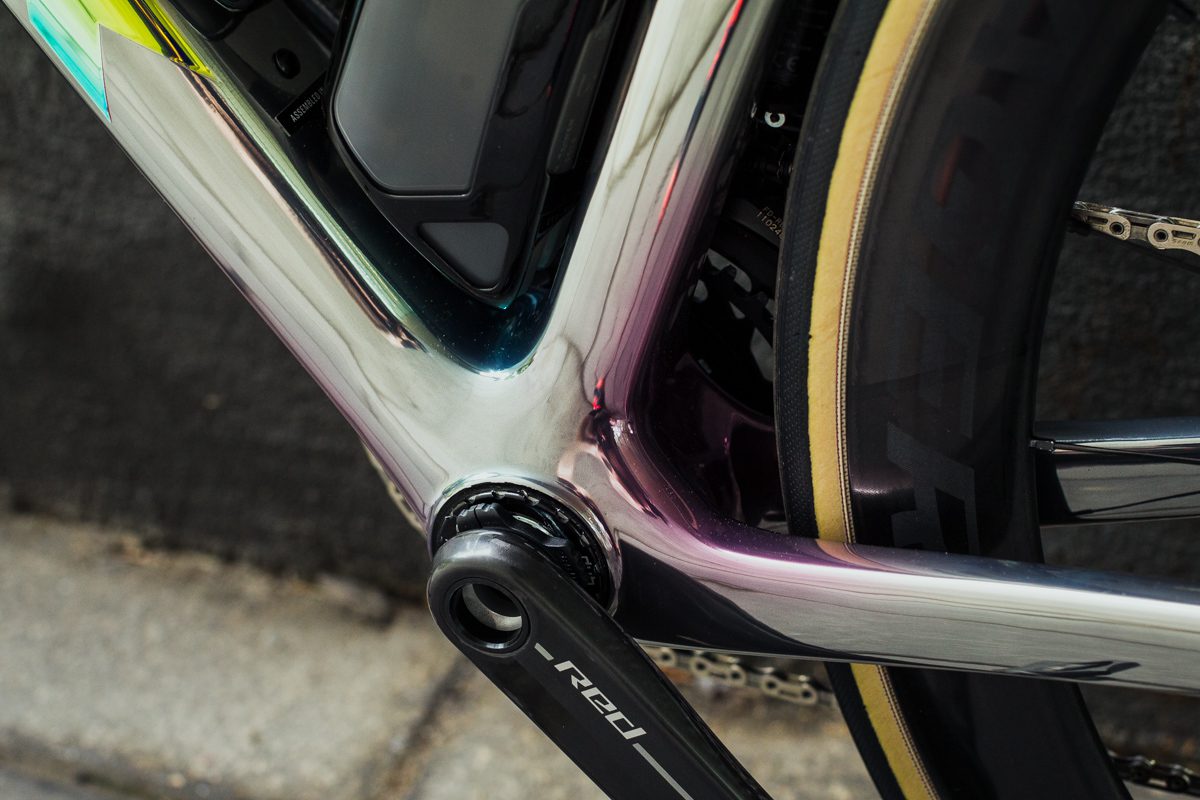
There’s another big bike marker that seems to be thinking like Trek
If you recall the launch of the Specialized Tarmac in 2023, you’ll remember that many of the tubes on that frame got a bit less airfoil-y and a bit rounder. It’s striking that two of the biggest bike manufacturers have come to similar conclusions about aerodynamics in their frames. Trek does keep an eye on its competitors but couldn’t really comment on the Tarmac. I got an honest answer on the matter. Simply, both companies test aerodynamics differently. Trek came to its own conclusions about when and how to merge its two platforms.
Your legs are nozzles, or, more about IsoFlow
The IsoFlow technology of the Gen 7 Madone does return on the latest version of the bike. The feature has some changes. It has more vertical compliance to better damp road vibrations. It also has more precise shaping to improve aerodynamics because the whole area around the IsoFlow gap, including the seat mast and upper seat tube, is, well, a windy place because of your legs.

“Between the rider’s legs, the flow accelerates as the legs act as a nozzle,” Davis said. “The torso is also acting like a nozzle in a perpendicular plane as the air gets ‘scooped’ by your chest and is pushed down to the same area between your legs. The local drag force on tube shapes increases with air velocity squared. Because of this, it is extra important to have streamlined shapes in areas of fast moving flow, which is why we have the seat tube, seat post and IsoFlow using aero shapes.”
Behind the rider things, the air gets twisted, but the IsoFlow can help a bit. “The key flow feature of a cyclist pedalling on a bike are two vortices that trail off the hips and lower back of the rider and propagate downstream,” Davis said. He also describes those vortices as mini tornadoes. “They’re responsible for a lot of drag. They create a low energy area with slow moving flow behind the rider. One of the goals of reducing drag in airflow is to try to keep energy as equal as possible. We want to add energy to low-energy areas. This is the aerodynamic reasoning behind IsoFlow. We want to create a channel for the fast moving air between the legs to reach the low energy area behind the rider. We’re of course limited by UCI rules and what’s practical on a bike, so we can only make a relatively small feature to do this, but it’s much preferable to having a tube there creating drag where we want it least.”
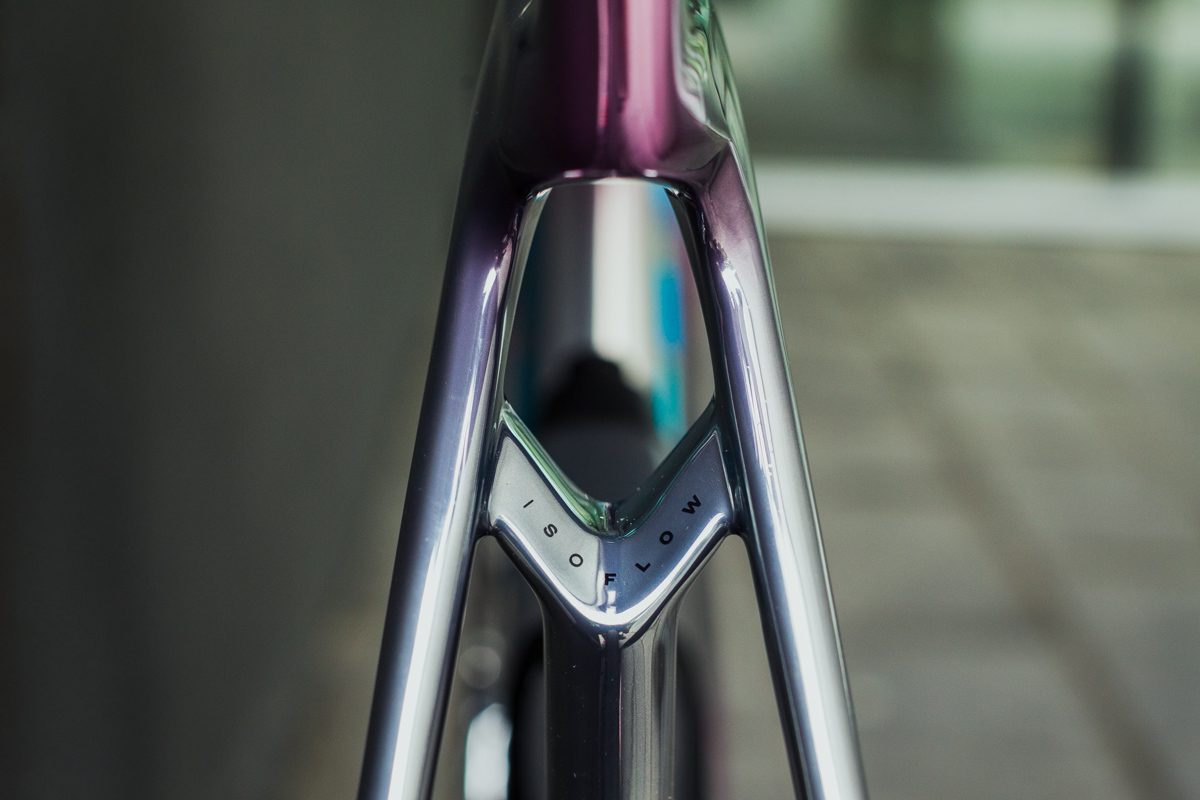
New carbon fibre in the Trek Madone SLR Gen 8
The new Trek Madone SLR Gen 8 frame uses a new carbon fibre called 900 OCLV Carbon. It’s 20 per cent stronger than the 800 Series OCLV Carbon, which was formerly Trek’s top composite. It’s the strength of the 900 OCLV that helped to cut weight in the frame. A new manufacturing process also helps. The company is able to create smoother tubes, both outside and inside. By minimizing any excess material, the overall weight goes down. The Gen 8 Madone in size medium large is 320 g lighter than a size 56 Gen 7 frame. (I know. I said I’ll tell you more about the different size designations. I will. Just not yet.)
Since it seems like there’s a new carbon fibre with the launch of each new top-end frame, I was thinking that surely we must be at the limit of what can be done with that material. Jordan Roessingh, director of road bikes, assured me that there is still room to improve materials and processes. I bet it won’t be long before we see 1000 OCVL.
RSL Aero bottles and cages of the Trek Madone Gen 8
The RSL Aero bottles and cages were designed to work with the new Madone. They are part of the full system foil. Trek said that they also tested the bottles and cages on other bikes, and not just aero bikes either. The RSL bottles and cages made for some aero gains on the other bikes, too.
The cages—which require low-profile bolts with rounded heads to attach them to the frame—can accommodate traditional cylindrical water bottles.

Two models of Trek Madone Gen 8: SLR and SL
The Madone SLR is the top-end frame made with the 900 OCLV Carbon. The second-tier frame, SL, is made with 500 OCLV. The SLR comes with the new bottles and cages. For the SL, you’ll need to buy them separately. The SLR has a one-piece bar/stem. SL has a separate handlebar and stem. SLR can only run electronic groupsets. If you don’t want servomotors changing your gears, the SL frame is for you.
Trek Aero RSL Road integrated bar/stem
Like the Gen 7 Madone SLR, the Gen comes with an integrated bar/stem. The new Trek Aero RSL Road handlebars are lighter than their predecessors. The tops of the bar are a bit taller, which helps to lower their weight and make them more comfortable to hold. Also, there’s an improvement to overall airflow because the tops of the handlebar actually condition the air so that it hits your legs at slower speeds.
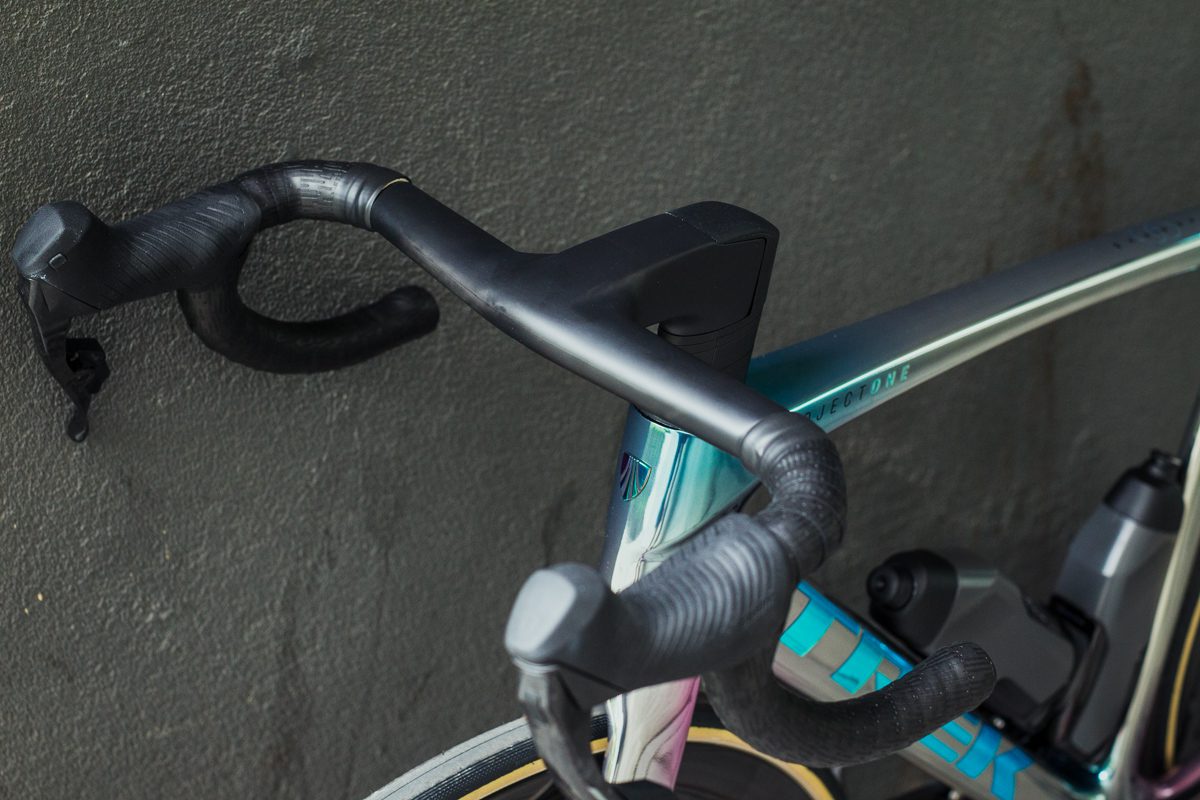
As with the previous generation’s bars, these feature a 3 cm difference between the hood-to-hood measurement and the drop-to-drop measurement. The bars on a size medium large frame have a 39-cm hood-to-hood distance and a 42-cm drop-to-drop distance. That gives you better aerodynamics up top and excellent control down below.
New sizing for the Trek Madone Gen 8
Traditionally, Trek uses nominal seat-post lengths to indicate size. The old Madone came in sizes 47 to 62 for a total of eight frames. There are six frames of the new Madone from XS to XL. Trek says it can fit the same range riders with these six. The geometry is slightly different than before. It’s no longer called H1.5. The new Road Race geometry only has a few millimetres difference from H1.5.
The smaller three sizes—XS, S and M—actually have slightly different tube shapes than the larger three: M/L, L and XL. The changes allow the frames to scale better. If Trek simply “shrunk” the large tubes, the smaller frames wouldn’t be a light as they could be. With the Trek Madone Gen 8, shorter riders get frames that are better tuned for them.
All frames have clearance for 32-mm tires.
Canadian prices for Trek Madone SLR and SL Gen 8 models
| Trek Madone Gen 8 model | Price |
|---|---|
| Madone SL 5 Gen 8 | $4,800 |
| Madone SL 6 Gen 8 | $7,000 |
| Madone SL 6 AXS Gen 8 | $7,650 |
| Madone SL 7 Gen 8 | $8,500 |
| Madone SLR 7 Gen 8 | $11,650 |
| Madone SLR 7 AXS Gen 8 | $12,300 |
| Madone SLR 9 Gen 8 | $17,500 |
| Madone SLR 9 AXS Gen 8 | $18,150 |
| Madone SLR 9 AXS Gen 8 (Icon Interstellar) | $22,650 |
First ride impressions of the Trek Madone SLR 9 AXS with P1 Icon Interstellar
My test bike is the Trek Madone SLR 9 AXS with P1 Icon Interstellar. Let me unpack what that means. It’s made with the top-end 900 OCLV Carbon and is built with the new SRAM Red drivetrain: a 10-33 tooth cassette and 48/35-tooth crankset with power meter. It rolls on Bontrager Aeolus RSL 51 wheels with new 28c Bontrager Aeolus RSL tires. My scale says the complete package weighs 7.62 kg. I included the new cages and water bottles (empty) because they are such a part of the system.
For years, when I’ve test Trek bikes, I’ve opted for size 54. With the Gen 8 Madone, I went with medium large, which is equivalent of size 56. Size 54/medium fits fine, but it puts me in a slightly compact position. Also, I always seem to be close to maxing out the longest available seatposts to get the proper saddle height on a 54/medium. With the medium large, I can dial my saddle height of 75 to 76 cm no problem. The fit is good: quite aggressive. In the drops, I’m comfortable. At the hoods, well, I was surprised. This is the first bike I’ve ridden with the latest SRAM Red groupset. Its lever hoods extend outward from the bars noticeably. I can fit all four fingers between the bar and inside of a lever easily. On the Madone, at the hoods, I do feel a bit more stretched out than usual, but I’ve still been comfortable on long rides. If ever there was a bike for getting lower and more aero, this is it.

A note about the paint: the far-out Icon Interstellar is a premium coat that comes from Trek’s Project One customization program. It adds $4,500 to the price of the bike. The same spec of Madone, SLR 9 AXS, comes in four other colours that keep the price to $18,150.
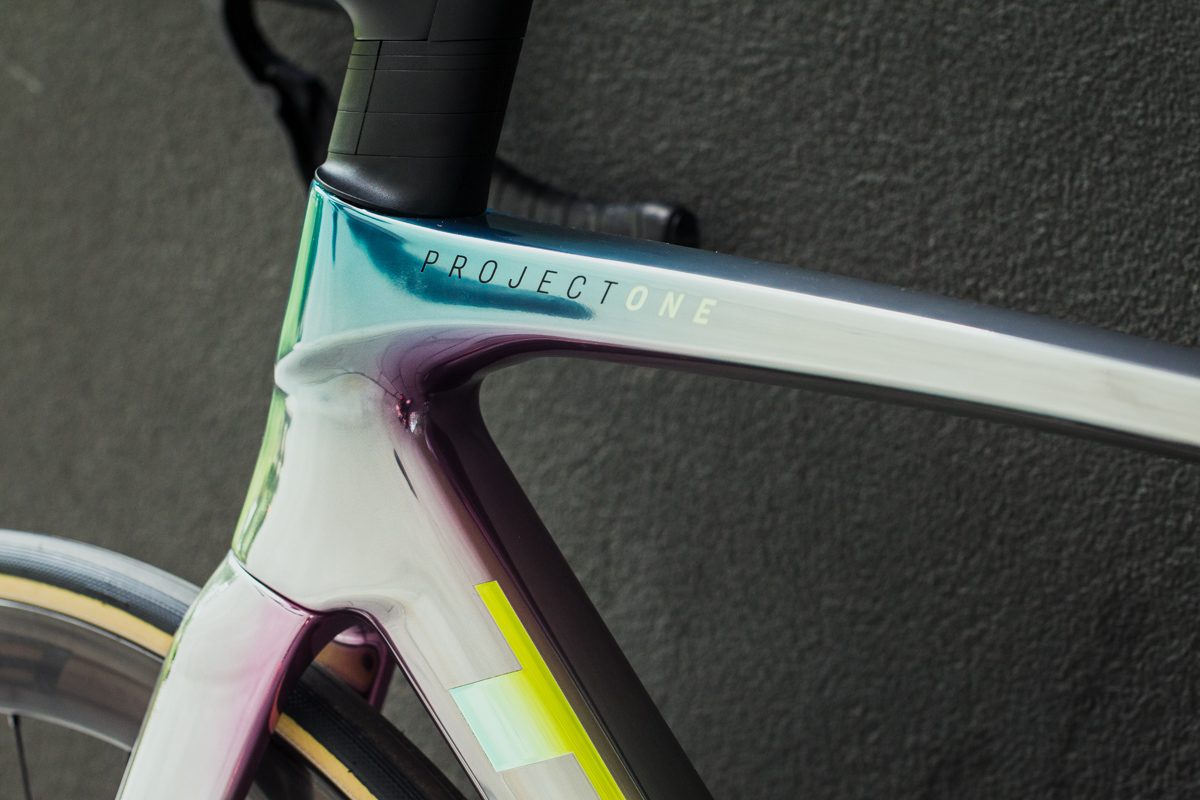
The Bontrager Aeolus RSL 51 wheels are strikingly smooth rolling and well-behaved when wind comes at them at various angles. The new Aeolus RSL tires feel great. As for the frame, it’s plenty stiff, making it lively and reactive. Since it’s light, it felt nimble on climbs. It truly is the Émonda’s heir. On the flats, it cruises so well. The IsoFlow does a top job of managing road vibrations.
I’m told that some pros on Lidl-Trek used to have a hard time picking between the Émonda and the Madone for their races. Not a bad problem to have, eh? Now, it’s one they don’t have to wrestle with. As for regular riders trying to decide between an aero bike and a lightweight bike—well, the Gen 8 Madone solves that conundrum.
As a rider who enjoys climbs, I always gravitate toward lightweight bikes, ones that speak to my skillset. I will miss the Émonda and what it represented. But the new Madone, this feathery wind-cheater, is just the bike I need for all my road rides.

